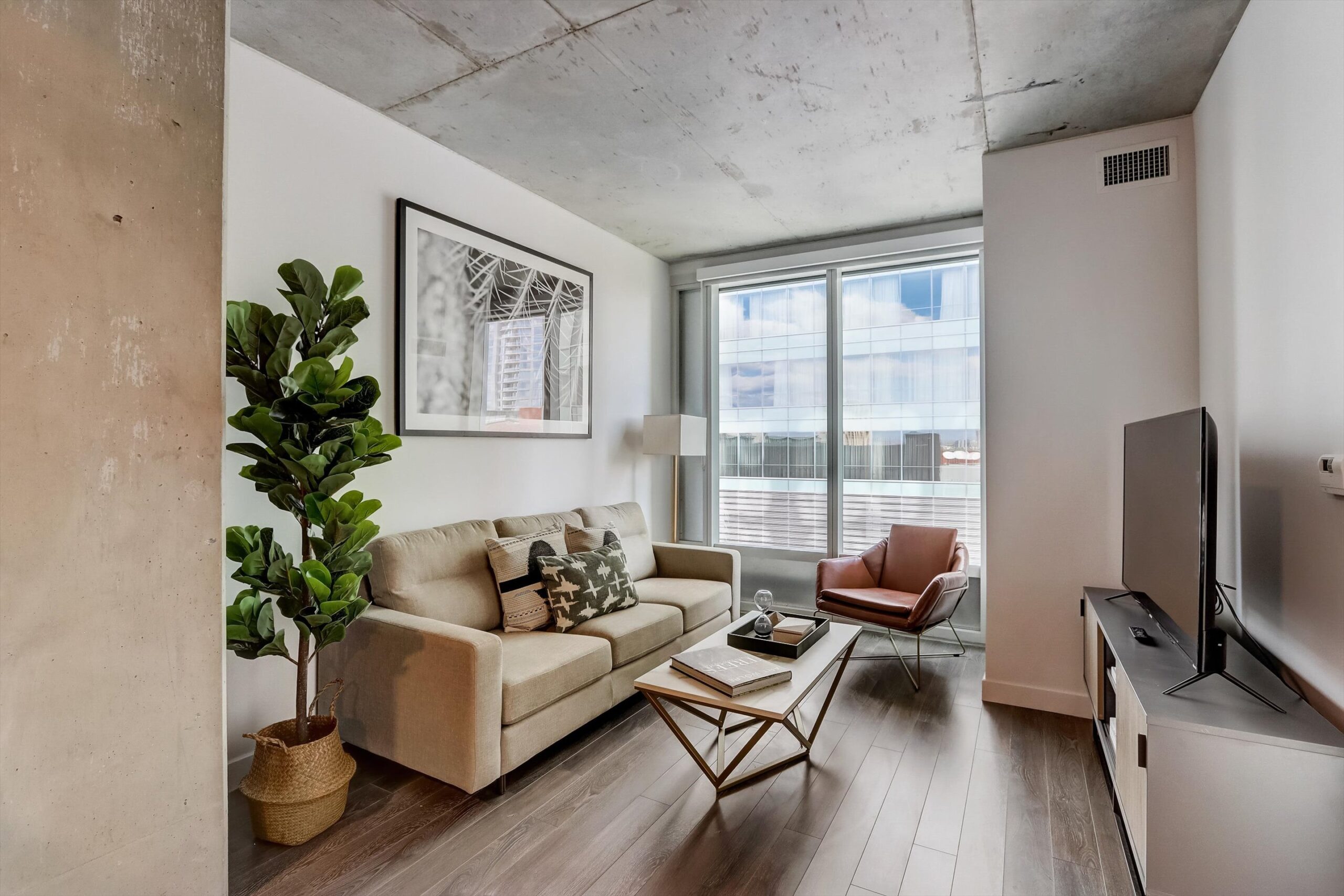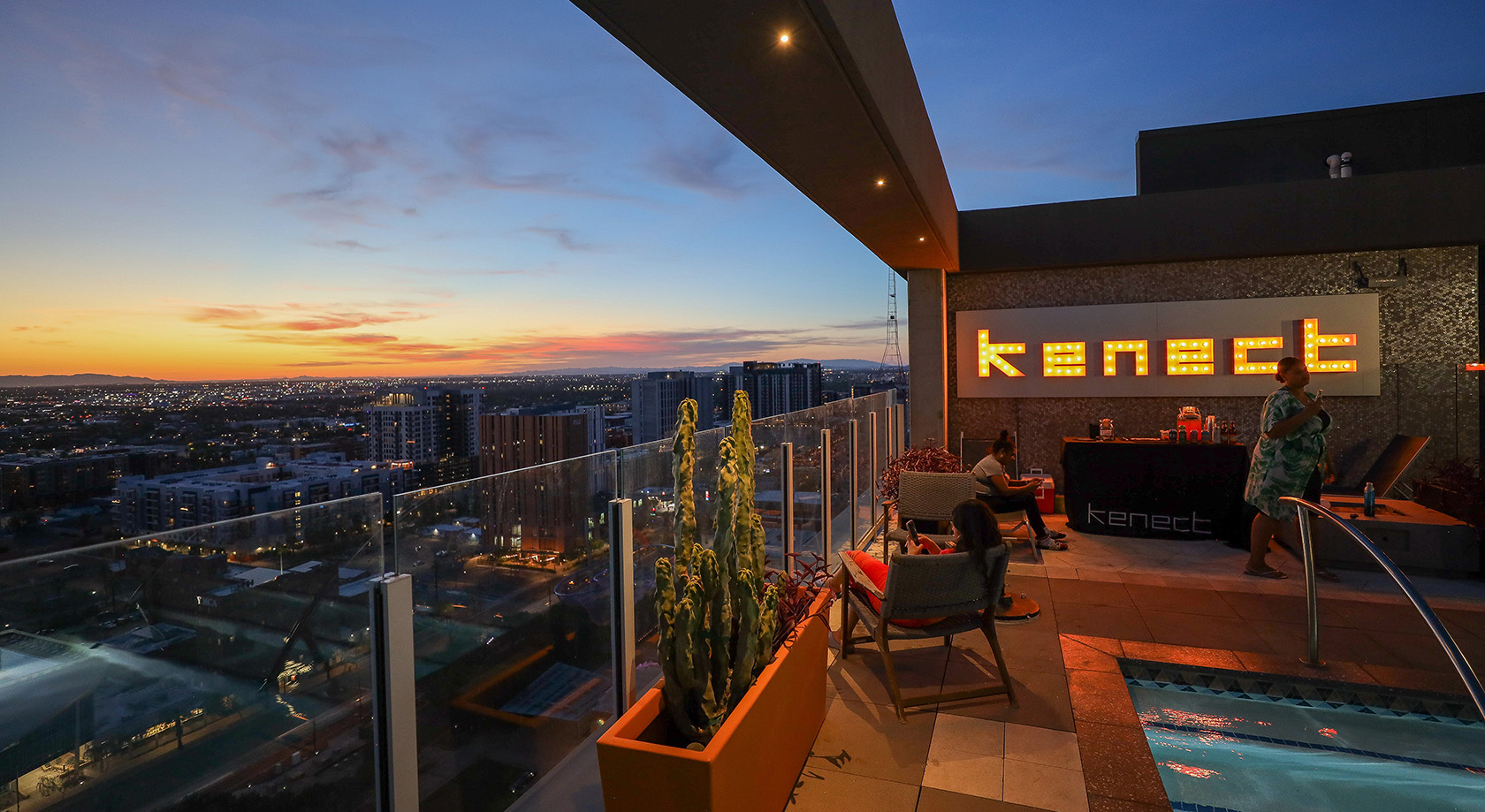Renting a furnished apartment can feel like the perfect solution for stress-free moving: you just show up, unpack and settle in. But before you get too comfortable, there’s one thing that deserves your full attention: the lease agreement.
Furnished leases come with more perks, but also more fine print. From furniture rules to deposit terms, these agreements can differ in important ways from standard rentals. Whether you’re moving for work, school or a fresh start, knowing what to look for can save you money, stress and potential misunderstandings down the line.
In this guide, we’ll walk you through how to read a furnished apartment lease, from what’s typically included to the key clauses that matter most, so you can rent smarter and live easier.
What Is a Furnished Apartment Lease Agreement?
A furnished lease is a rental agreement for a move-in-ready apartment that includes the key items you’ll need for daily living. What’s included can vary, but most furnished apartments offer:
- Basic furniture, like beds, sofas, dining tables and chairs
- Kitchen essentials like cookware and dishes
- Appliances such as microwaves, refrigerators and washers/dryers
- Lighting and decor, including rugs, lamps and decorative accents
Furnished leases can be long- or short-term, making them a great fit for renters who value convenience and flexibility, like students, digital nomads, business travelers and those in the middle of a life transition. With no need to furnish or decorate, you can focus on settling into your new city or schedule, without the hassle of setting up a home from scratch.
What Makes a Furnished Apartment Lease Different?
While furnished apartments provide a ready-to-live-in experience, they also come with some unique lease terms and tenant responsibilities that you won’t find in standard (unfurnished) agreements, such as:
- Higher Monthly Rent: Furnished units typically cost more due to the inclusion of furniture, appliances, amenities and anticipated wear and tear.
- Larger or Itemized Security Deposits: Deposits may be higher to cover potential damage to furnishings and are often itemized with specific replacement costs.
- Detailed Inventory Lists: Leases typically include a checklist of all provided items, which tenants must review and confirm upon moving in and also leave when vacating to avoid extra fees for replacement
- Expectations for Furniture Care: Tenants may be required to follow specific care guidelines, such as using coasters or avoiding eating on certain furniture.
- Stricter Rules Around Modifications: Moving or storing furniture is often restricted, and even minor changes like hanging wall art may need approval.
- Responsibility for Damage vs. Wear and Tear: Leases often clarify what’s considered normal use versus tenant-caused damage, which can affect your deposit.
- More Defined Move-Out Requirements: Tenants may need to restore furniture to its original arrangement and meet higher cleaning standards before vacating.
Important Clauses in a Furnished Apartment Lease
Furnished leases can pack in a lot of detail, and overlooking the fine print could cost you. Before signing, carefully review these key sections of the lease:
Furniture Use and Restrictions
This clause outlines what you can and cannot do with the provided furnishings. It may include:
- Whether furniture can be moved or rearranged
- If you’re allowed to remove items and store them elsewhere (common in more extended stays)
- Restrictions on guests using or sleeping on the furniture
- Rules about adding your own furniture to the space (some landlords prohibit this altogether)
Understanding these rules can help you avoid unintentional violations, like swapping out a couch or storing unused items in a closet, that may violate your lease or lead to damage claims.
Inventory and Condition Reports
Most furnished rentals will require a formal checklist or condition report at move-in. This document includes:
- A list of every item included in the unit
- Notes on existing damage, stains or wear
- Space for tenant comments and signatures
You should inspect everything carefully, take photos of any existing issues and make sure they’re noted in writing. Without this documentation, you may be held responsible for damage that was already there.
Watch our video for move-in tips and everything you should do before moving into a new apartment: https://youtube.com/shorts/Cjc14e3-YmI
Maintenance and Repairs
This clause outlines who is responsible for maintaining and repairing the furniture, appliances and fixtures provided in the apartment. It’s especially important in a furnished lease, where wear and tear may extend beyond the usual walls and flooring. Look for details on:
- What qualifies as normal wear and tear versus tenant-caused damage
- Whether the landlord is responsible for all repairs or just major issues
- Whether you need approval before arranging your own repairs
- How quickly you’re expected to report damage
For instance, if a dining chair becomes wobbly, are you expected to tighten it yourself or notify the landlord? Clarifying these responsibilities upfront can help prevent disputes, delays or accidental lease violations. Make sure you understand the process for submitting maintenance requests and keep a record of any issues you report during your stay.
Cleaning Requirements
Furnished apartments often have stricter cleaning expectations, especially at move-out. This is because landlords must maintain not only the unit itself but also the condition of the furniture, appliances and décor for future tenants. Your lease may outline specific expectations such as:
- Required level of cleanliness at move out (e.g., “professionally cleaned,” “move-in ready”)
- Deep cleaning instructions for specific items, such as the oven, refrigerator or upholstered furniture
- Carpet and upholstery cleaning requirements
- Guidelines for trash removal and kitchen cleanliness
- Recommended or required vendors for cleaning services
Even if the apartment looks “clean enough,” leaving behind things like pet hair on the couch or crumbs in drawers could still lead to deposit deductions, depending on the specific cleaning requirements in your lease.
Security Deposit Terms
Security deposits for furnished units are often higher than average because of the added value of the included furniture and equipment. Check for details on:
- Whether the lease includes itemized charges for specific damages or losses, such as $150 for a stained mattress or $80 for a broken lamp.
- What the deposit covers beyond physical damage, including cleaning fees, missing inventory or unpaid utilities
- How long the landlord has to return your deposit after move-out, as per your local city laws.
- What the process is for disputing any deductions
Knowing what’s covered (and what’s at risk) helps you stay informed and avoid surprises when your lease ends.
Utilities and Services
Furnished leases often bundle services like:
- Internet
- Cable or streaming packages
- Water, trash and electricity
- Cleaning services (weekly or monthly)
However, it’s important not to assume these amenities are part of the package. Always verify in writing what’s included, as some leases offer a flat utility fee while others place caps on usage and charge overages. Clarify exactly what you’re responsible for to avoid unexpected charges later on.
What To Know Before Your Furnished Apartment Lease Ends
As your lease term nears its end, it’s important to know what to expect. If you’re planning to move out, the process may be more involved than with an unfurnished unit. Furnished rentals typically require a closer inspection of not just the overall condition of the space, but also the included furniture, appliances and décor.
You may be asked to return everything to its original placement, meet specific cleaning standards and attend a final walkthrough inspection. During that walkthrough, the landlord will assess any damage beyond normal wear, check for missing items and determine whether deductions will be made from your security deposit.
This is where documentation matters. If you completed an inventory or condition report when you moved in, now is the time to refer back to it. Ideally, you’ve kept records of any existing damage or wear reported during your stay. Photos, emails and maintenance requests can all serve as important evidence if there’s a dispute.
Some leases require professional cleaning at move-out, particularly if the unit includes upholstered furniture or rugs. If you don’t meet those standards, cleaning fees may be deducted automatically from your deposit. Knowing these expectations ahead of time can help you avoid unnecessary charges.
If you’re considering extending your stay, don’t wait until the last minute to ask. Some furnished rentals may already be booked for the next tenant, particularly in high-demand areas or during peak moving seasons. Giving your landlord early notice can increase the chances of negotiating a renewal or short-term extension that works for both parties.
Understanding Your Apartment Lease: Final Tips Before You Sign
Reading through an apartment lease can feel overwhelming at first. But taking the time to understand the details is one of the most important steps in protecting your budget, your peace of mind and your overall rental experience.
Before you sign, make sure you:
- Confirm exactly what’s included in your furnished apartment, both in terms of physical items and bundled services.
- Understand your responsibilities for caring for the furniture and appliances provided.
- Review any restrictions on modifications, storage or long-term guests.
- Ask questions about deposit terms, move-out expectations and what qualifies as normal wear and tear.
- Keep a copy of your inventory report and take timestamped photos when you move in.
If you’re still deciding how to rent a furnished apartment or whether it’s the right option for you, it helps to work with a property team that understands the importance of flexibility and transparency.
At Kenect, we offer fully furnished apartments in Nashville and Phoenix, with flexible lease terms that fit your lifestyle. Choose from studio, one-bedroom or three-bedroom layouts, including shared three-bedroom apartments with private bedrooms, bathrooms and individual leases. Plus, with our Kenect-HAUS package, you can get everything from linens and cookware to small appliances for a low monthly fee, so you’re truly ready from day one.
Still have questions about your apartment lease or furnished rental options? Contact us and we’ll help you find your perfect fit.



